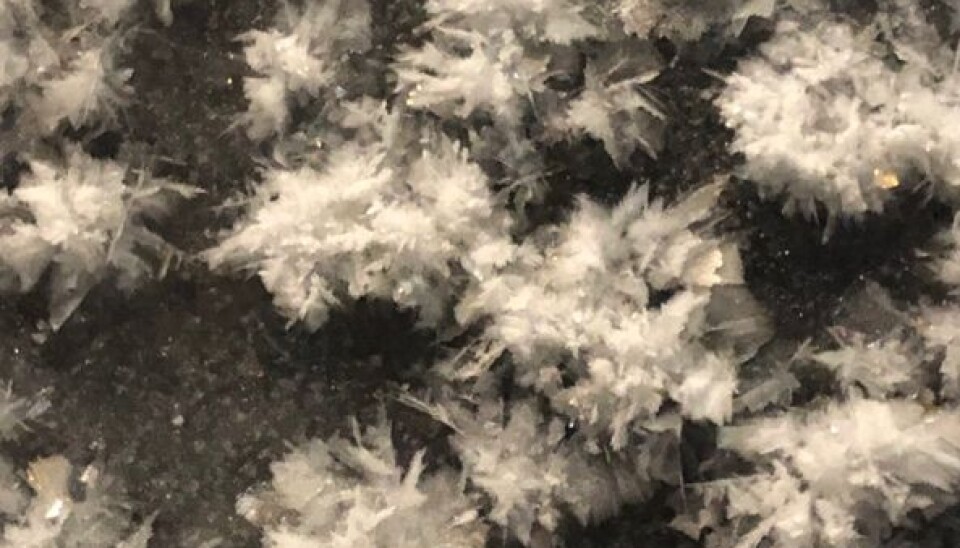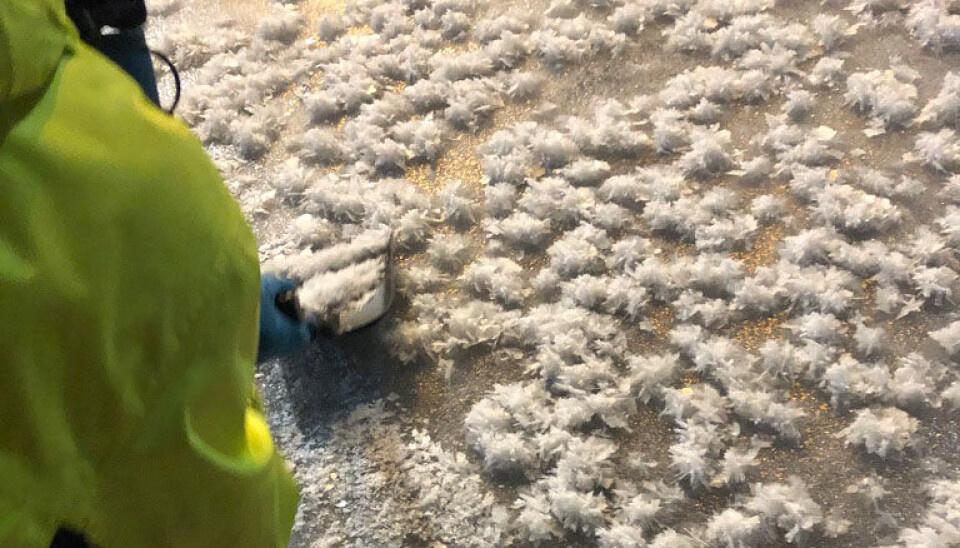
Picking frost flowers in the Polar night
A couple of days ago when we were sailing between two of our process stations, we came across a beautiful icy garden covered with frost flowers. So we decided to go picking them.
Frost flowers are beautiful fragile flowers spanning large areas of the sea ice. Frost flowers grow on newly formed sea ice, and they are made up of delicate and amazing crystals, and can be several centimetres long.

They cannot withstand wind and they only live for a few days, or typically one week, before they are covered with snow. Then the delicate structure collapse and form a brine wetted snow layer. Although we have been on the ice for several weeks now, we have only seen ice roses once before, so this rare opportunity had to be taken advantage of! We got permission from the cruise leader and thumbs up from the bridge, and started looking for sampling equipment.
Since the ice is newly formed it is too thin to walk on. We therefore had to use a cage that was lowered down from the ship. The highly trained and skilled crew from the boat lowered us gently over the top of the ice and we started picking the flowers. As the flowers are too fragile and too difficult to actually pick, we had to use a shovel. Then we managed to pick a bucket full of flowers that were taken back to the ship for analyses.

From elsewhere in the Arctic, we know that frost flowers can be colonized by bacteria from the seawater under the ice. Is there also life in our frost flowers? Who are the creatures that manage to live here? And what functions do they have in this beautiful, but extremely cold and dark flower meadow – in the garden of the polar bear?







